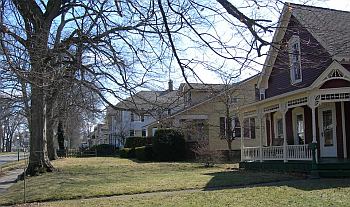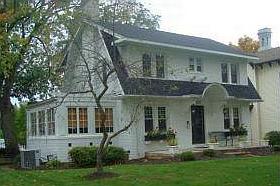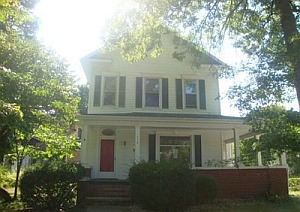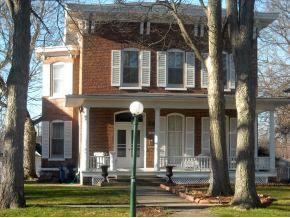 01/14/14 Word was recently received regarding the application nominating the South Michigan Street corridor in Plymouth to the National Register of Historic Places. The nominating process began in 2005 and was forwarded to the National Register with a positive recommendation by the Indiana State Historic Preservation Office in October, 2013. The district which lines South Michigan Street between the railroad viaduct and Oakhill Avenue, and Webster Avenue to Bayless Street, was officially listed on the National Register of Historic Places on December 31, 2013.
01/14/14 Word was recently received regarding the application nominating the South Michigan Street corridor in Plymouth to the National Register of Historic Places. The nominating process began in 2005 and was forwarded to the National Register with a positive recommendation by the Indiana State Historic Preservation Office in October, 2013. The district which lines South Michigan Street between the railroad viaduct and Oakhill Avenue, and Webster Avenue to Bayless Street, was officially listed on the National Register of Historic Places on December 31, 2013.
 The “Plymouth Southside Historic District” joined the “Northside Historic District” which had been officially listed earlier in 2013. The Northside District lines North Michigan Street between Adams Street and Novelty Street and includes the blocks around the Marshall County Courthouse Square. The two districts join the Plymouth Downtown Historic District, listed in 1998, to form one of the longest continuous corridors in the State of Indiana listed on the National Register.
The “Plymouth Southside Historic District” joined the “Northside Historic District” which had been officially listed earlier in 2013. The Northside District lines North Michigan Street between Adams Street and Novelty Street and includes the blocks around the Marshall County Courthouse Square. The two districts join the Plymouth Downtown Historic District, listed in 1998, to form one of the longest continuous corridors in the State of Indiana listed on the National Register.
 Listing on the National Register of Historic Places allows certain income-producing properties eligibility for rehabilitation tax credits and non-profit and municipally-owned buildings eligibility for historic preservation grants. Listing does not hinder or prevent property owners from making changes to their buildings. Districts listed on the National Register have been shown to maintain their general property values and generate added investment in the community.
Listing on the National Register of Historic Places allows certain income-producing properties eligibility for rehabilitation tax credits and non-profit and municipally-owned buildings eligibility for historic preservation grants. Listing does not hinder or prevent property owners from making changes to their buildings. Districts listed on the National Register have been shown to maintain their general property values and generate added investment in the community.
 Wythougan Valley Preservation Council, in conjunction with a grant received from the Indiana Landmarks Partners in Preservation Fund, undertook the project. The nominations provided valuable historical research on many of the properties in the districts. The documents are available for review/research at the Marshall County Historical Society. Wythougan was established in 1999 to promote historic preservation activity in Marshall County. Other National Register districts developed by the organization include the Argos Downtown Historic District and several individual sites throughout the county.
Wythougan Valley Preservation Council, in conjunction with a grant received from the Indiana Landmarks Partners in Preservation Fund, undertook the project. The nominations provided valuable historical research on many of the properties in the districts. The documents are available for review/research at the Marshall County Historical Society. Wythougan was established in 1999 to promote historic preservation activity in Marshall County. Other National Register districts developed by the organization include the Argos Downtown Historic District and several individual sites throughout the county.
Submitted















